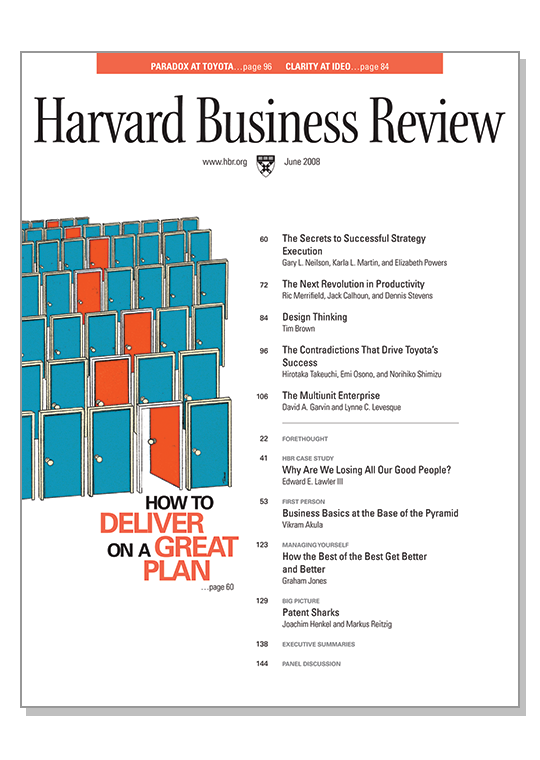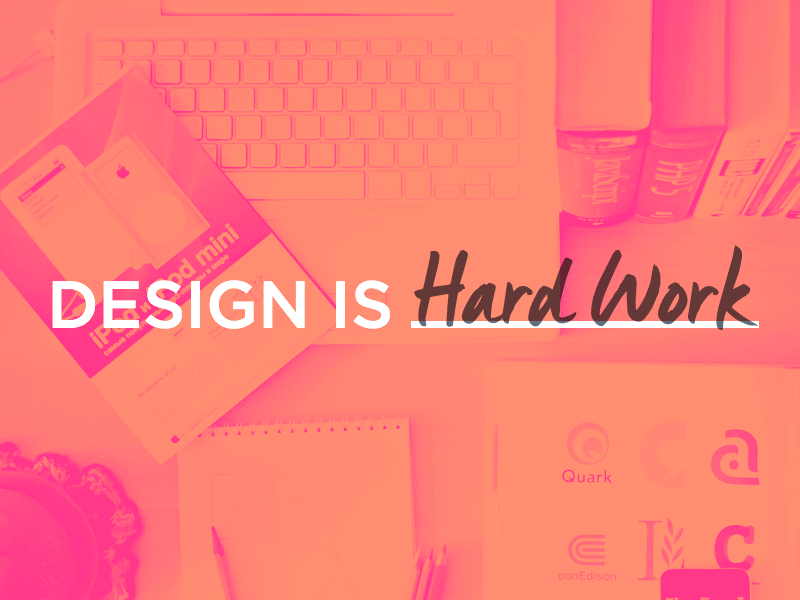
Beyond the headlines of a few publicized successes, most Fortune 500 companies still fail to even adopt a single design methodology in a meaningful and useful capacity, let alone deploy design broadly in their organizations via Strategic Design.
I’m excited to see the growing awareness around the limitless potential of design, whether it’s IDEO utilizing Design Thinking to reinvent business consulting, Apple becoming the first trillion dollar company by utilizing design broadly for innovation, or distinguished publications like Harvard Business Review and Forbes publishing incredible exposés on Design Thinking that have reached millions of executives, entrepreneurs, and investors.
With that said, it still blows my mind to see design rarely utilized beyond the Art Department in most businesses today.
But why? Why hasn’t design been widely deployed in organizations?
After talking with hundreds of executives and consulting with some of the best companies in the world, I’ve identified the top reasons and listed them here…
Reason #1: Lack of Design Representation in the Corporate C-Suite
The one major issue to the lack of design adoption is that design is rarely represented in the C-suite of most companies, which makes it almost impossible to achieve any acceptance with the key decision-makers, influencers, and those responsible for allocating budgets within these corporations.
And why isn’t there more design representation in the C-suite?

I would argue that all of the reasons I will mention next are 100% correlated to the fact that we rarely see design represented in the C-suite of businesses today.
Read below and leave a comment if you agree…
Reason #2: Same Old Business Methods Used for Competitive Advantage

The biggest problem is that we’ve been doing business pretty much the same way for thousands of years since the beginning of trade. We continue to make incremental improvements to products and services while using the same old business methods to differentiate and remain competitive, e.g. cost cutting, layoffs, M&A, etc. It’s the definition of insanity, where businesses continue to do the same things and expect better results. Sears wasted $6 BILLION attempting to avoid bankruptcy by doing a share buyback. Wow. They’ve known for almost 10 years that they needed to change and did nothing new to innovate or compete.
Reason # 3: Business Schools are Teaching the Same Old Business Methods

This problem is just as evident in how schools are teaching business management today, which I discovered firsthand getting an MBA. While I absolutely loved the experience of attending Darden Graduate School of Business (ranked #1 by the Economist the last 7 years), I realized that it was a deeply flawed education because the business skills and knowledge are almost entirely devoid of any creativity. I was shocked that 90% of the 300+ case studies I worked on were written between 1960 – 1980, where we were literally learning the same things as those who attended Darden over 50 years ago!
Business today looks nothing like it did back then, so why aren’t we learning new approaches to business management? We’re essentially stuck in an endless self perpetuating system of learning and doing business the same old way. Seems like business itself is ripe for innovation!
Reason # 4: Leaders Don’t Understand the Business Value of Design
For more than a century, IBM has been one of the leading names among computing giants, dominating the early global market with technical and service superiority, computation and tabulation machines, and successfully obtaining lucrative defense contracts. However, IBM’s success was also the result of a progressive corporate culture well ahead of its time, where the late chairman and CEO Thomas J. Watson, Jr. grew IBM on the premise that “good design is good business.”

Watson was the lone pioneer embracing design in the early days of corporate America, where it’s difficult to understand that even a hundred years after Watson’s revelation, design is still not embraced in the world’s largest companies like it was with IBM. And from my experience, it’s due to the fact that most executives still don’t understand the value of design or how to quantify design’s value.
Reason #5: Lack of Knowledge of How to Apply Design Broadly in the Organization
Without proper representation in the C-suite or knowledge of how to harness the power of design, organizations lack the insight to adopt any of the myriad design methodologies, and instead fall back on old methods as I mentioned in Reason #2 above.
Additionally, design is perceived to be used solely among the creative folks of a company – graphic designers, user experience designers, artists, photographers, etc. – instead of embedded in the fabric of an organizations’s culture, strategy, and operations.
That’s why I always push organizations to hire design leaders for roles in the C-suite and throughout the organization to provide the necessary knowledge and guidance on applying design methodologies broadly for innovation, creativity, and problem-solving.
Reason #6: Art Careers are Not Encouraged as a Successful Career Path

I remember telling my father that I was going to be an Art major in college, and his response of “Why not pick business as a major… do you really want to be a starving artist?”
I’m sure millions of kids have heard this lecture from their parents, right?
More recently, there’s been a massive push to get kids interested in careers in Science, Technology, Engineering, and Math (STEM).
But what about the Arts?
Why not STEAM? Or better yet, let’s give the arts a double dose and make it A-TEAMS!
Reason #7: Standardized Tests Value IQ Over Creativity and EQ
Do you remember taking standardized tests in middle school to test your aptitude? Or the SAT’s to test your intellect to get into college, or the GMAT’s for graduate school?
Did any of these tests measure your creativity? Or emotional intelligence (EQ)?
No, no they did not.

How do you think us creative kids did in comparison to the non-creatives?
These tests negatively impact our ability to get into elite schools, as well as to rise high in the ranks of the top companies. These standardized tests are the epitome of conformity – the exact opposite of creativity – and radically limit the creativity of businesses by reducing the ability of creatives to attend the best schools and are therefore overlooked for key leadership roles by the best businesses.
Conclusion
Clearly there’s some major major barriers to implementing design broadly in organizations, both from within organizations as well as from ubiquitous societal norms.
And the problem itself wouldn’t be as difficult to overcome if only one or two were true, but the compounding effects of all of them applied en masse over hundreds of years has led to the epidemic we’re facing today.
It will be a long road ahead until creativity is valued in our society, so it’s best if you think globally and act locally. Do the best to implement it in your world of influence, starting with you, your kids, your family. And then look to your work and social spheres. Write your Congressman.

It’s only when we teach our kids that creativity is just as valuable as math and science where a new generation will grow up and utilize their creative skills in all areas of business, not just the creative arts.


